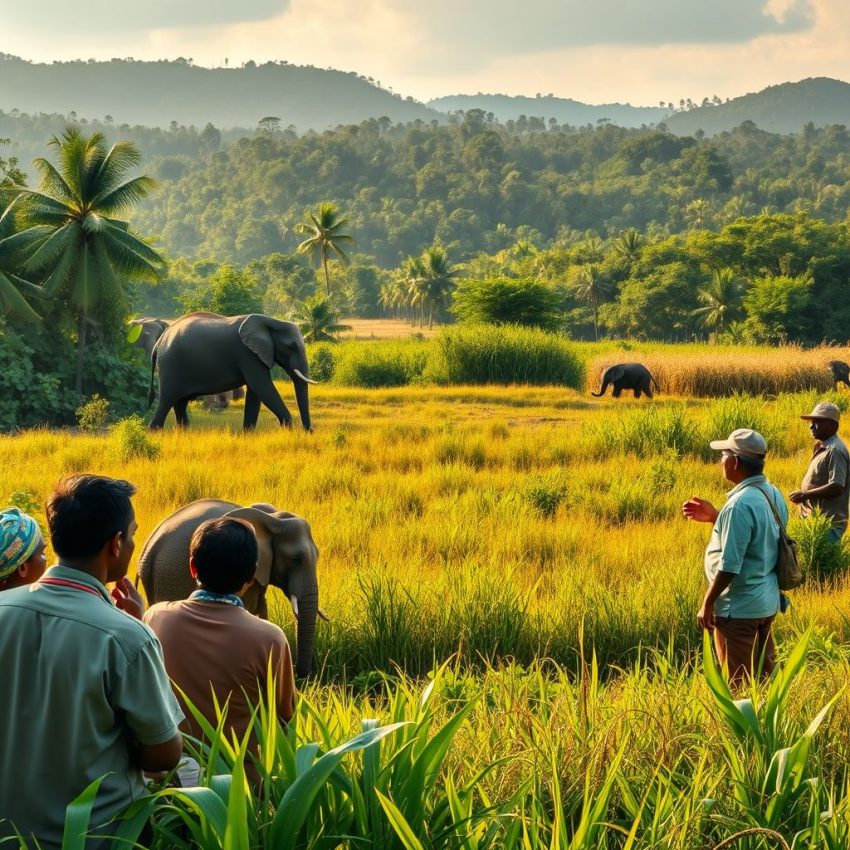Monkey Business: Sri Lanka's Wildlife Census Stirs Debate Over Crop Damage
Sri Lanka, a biodiversity hotspot, is undertaking a massive wildlife census, counting everything from its iconic elephants to the more elusive rusty-spotted cat. But amidst the excitement of documenting the island's rich fauna, a more contentious issue is bubbling to the surface: the escalating conflict between humans and wildlife, particularly with monkeys, giant squirrels, and peacocks.
The census, a crucial step in conservation planning, aims to provide accurate population numbers for various species. This data will inform strategies for managing wildlife populations and mitigating human-wildlife conflict. However, for many farmers, the census feels like a bureaucratic exercise while they struggle with the daily reality of crop raiding.
Monkeys, known for their intelligence and adaptability, have become increasingly bold in their raids on farmland. Giant squirrels, though less notorious, also contribute to crop losses, particularly in fruit orchards. Even the resplendent peacock, Sri Lanka's national bird, is implicated, feeding on grains and damaging crops in the process.
Farmers across the country report significant losses due to these animals. From paddy fields to vegetable gardens and fruit orchards, no crop seems safe. "They come in troops," laments one farmer, describing the monkey menace. "They eat what they want and destroy the rest. We can't afford these losses."
The issue is complex, rooted in habitat loss and increasing human encroachment into wildlife territories. As forests shrink, animals are forced to seek food elsewhere, often leading them into conflict with humans. The situation is further exacerbated by practices like feeding wild animals, which habituates them to human presence and encourages them to raid crops.
While the census is a welcome step towards understanding and managing wildlife populations, farmers are demanding more immediate solutions. They call for effective strategies to mitigate crop damage, including:
- Improved fencing and other physical barriers: While costly, these can offer significant protection against crop raiding.
- Community-based monkey control programs: These programs could involve trained personnel to safely deter monkeys from entering farmlands.
- Exploring alternative cropping patterns and strategies: Certain crops are less attractive to these animals, and strategic planting could minimize losses.
- Compensation schemes for crop damage: This could provide some financial relief to affected farmers.
- Public awareness campaigns: Educating the public about responsible interactions with wildlife, such as avoiding feeding them, is crucial.
The Sri Lankan government faces a challenging balancing act: protecting its rich biodiversity while addressing the legitimate concerns of its farmers. The wildlife census is a vital first step, but it must be followed by concrete action to mitigate human-wildlife conflict and ensure a sustainable coexistence for both humans and animals. The success of conservation efforts depends on finding solutions that benefit both wildlife and the communities that live alongside them. Only then can Sri Lanka truly safeguard its natural heritage for future generations.
Don’t miss out on this exclusive deal, specially curated for our readers! HyperDrive Next 10 Port USB-C Hub
This page includes affiliate links. If you make a qualifying purchase through these links, I may earn a commission at no extra cost to you. For more details, please refer to the disclaimer page. disclaimer page.

